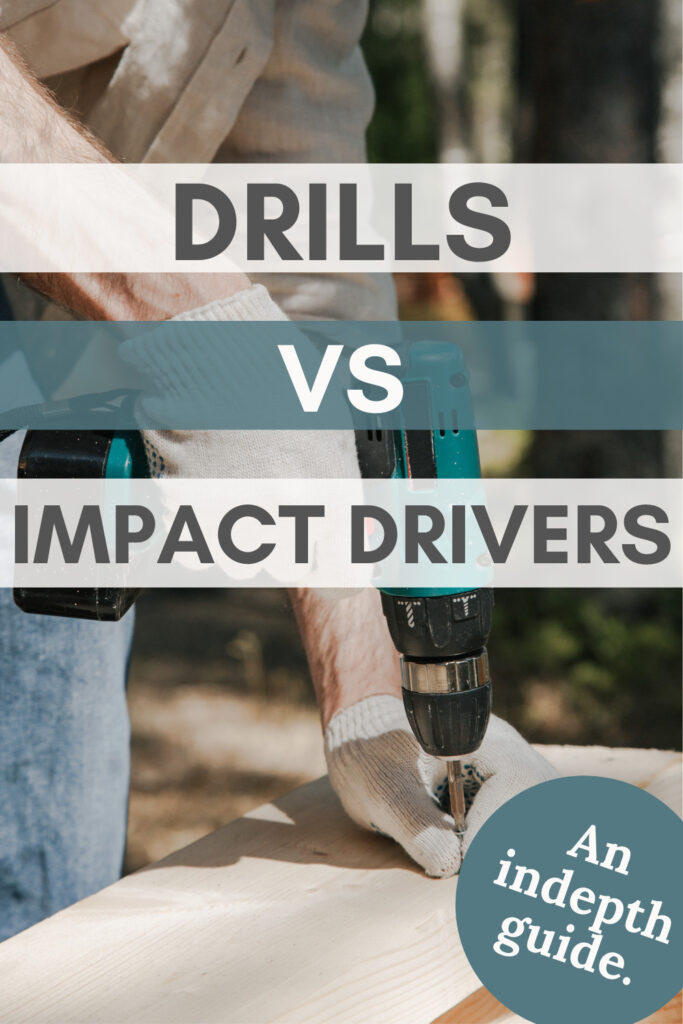This post may contain affiliate links. I try to make my posts as helpful as possible and have great products easy for you to access. The use of these links provides me a small commission at no cost to you. As an Amazon Associate, I earn from qualifying purchases.
When to Use a Drill vs. Impact Driver
When it comes to drilling and driving screws, there are two main tools that come to mind: the drill and the impact driver. While both tools are useful in their own right, they have different purposes and are better suited for different tasks. This post includes a breakdown of when to use a drill vs. an impact driver plus everything else you need to know about impact drivers and drills.
In this post you will find:
- Everything to Know about Using an Impact Driver:
- What is an Impact Driver?
- How Does an Impact Driver Work?
- When Do I Use an Impact Driver?
- How to Use an Impact Driver
- What Are the Benefits of Using an Impact Driver?
- Everything to Know about Using a Drill:
- What is a Drill?
- When to Use a Drill
- How to Use a Drill
- Drill Bit Types and Purposes
- How to Set the Drill to the Desired Torque/Power Level
- Can I Use a Drill as an Impact Driver?
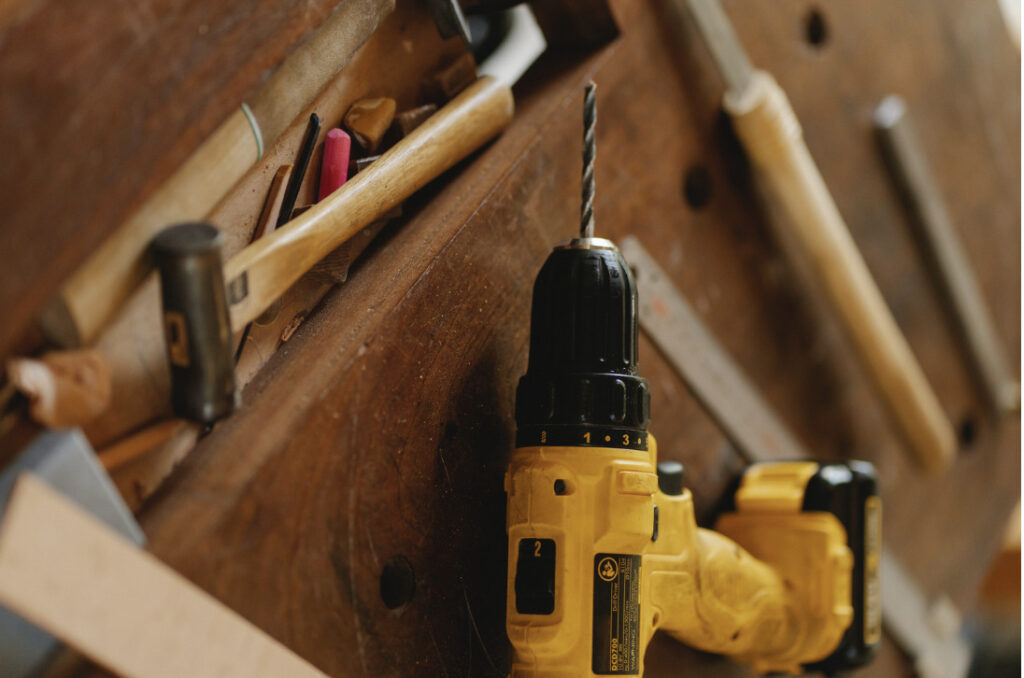
Everything to Know about Using an Impact Driver:
What is an Impact Driver?
An impact driver is a handheld power tool used for driving screws and bolts. Unlike a drill, an impact driver delivers powerful rotational and downward force to drive fasteners quickly and efficiently.
How Does an Impact Driver Work?
An impact driver works by using rotational force to drive screws and bolts. When you pull the trigger, a motor inside the tool spins a spring-loaded mechanism called the anvil. As the anvil rotates, it repeatedly strikes the end of the screwdriver bit, delivering powerful rotational force and downward pressure to drive the screw or bolt into the material. Using an impact driver is kind of like hammering and screwing at the same time.
When to Use an Impact Driver:
An impact driver is ideal for driving long screws or bolts into hard materials like hardwood or metal. It’s also great for driving screws quickly and efficiently and can be a good option for tasks like building decks or framing walls. However, it’s not recommended for tasks that require precision or for driving small screws into delicate materials like drywall.
Use an impact driver when:
- When you need to drive long screws or lag bolts into hard materials like hardwood or metal
- When you need to drive screws quickly and efficiently
- When you don’t need to use a clutch or torque control (we will learn more about this in the drill section below)
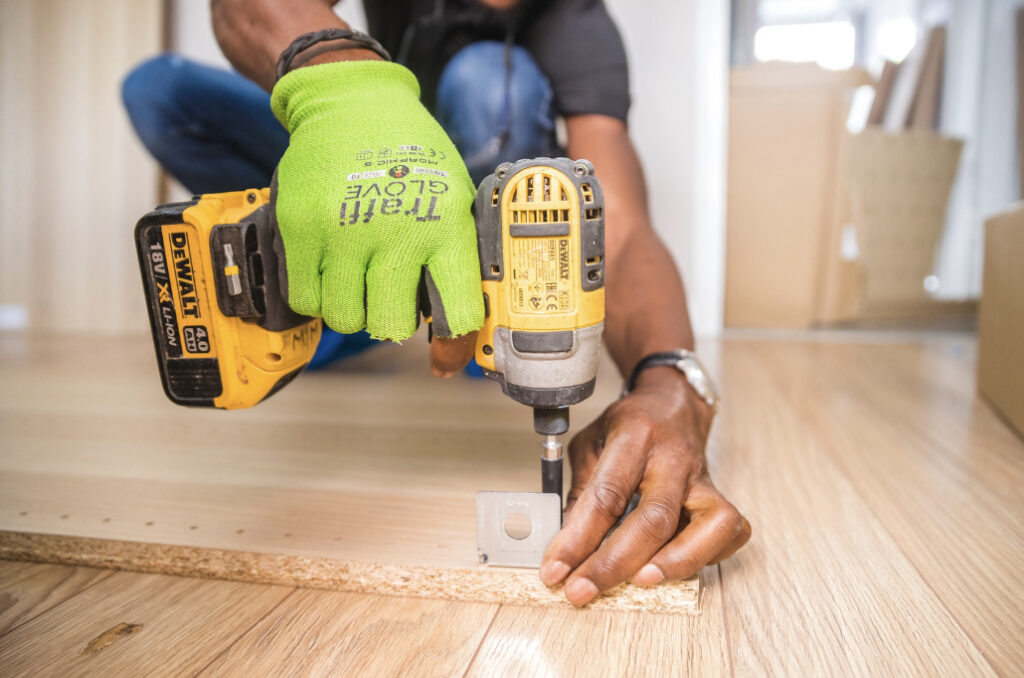
How to Use an Impact Driver:
Using an impact driver is easy. Here’s how to do it:
- Choose the right bit for the job. For example, use a Phillips head bit for Phillips head screws.
- Insert the bit into the chuck of the impact driver and tighten it.
- Place the tip of the bit onto the screw head and press firmly.
- Pull the trigger of the impact driver to start driving the screw.
- Continue driving the screw until it’s flush with the surface.
What Are the Benefits of Using an Impact Driver?
Using an impact driver has several benefits over using a traditional drill, including:
- Faster Driving: Because an impact driver delivers more torque than a drill, it can drive screws and bolts much faster.
- Easier Driving: With the combination of rotational force and downward pressure, an impact driver makes it easier to drive screws into hard materials like hardwood or metal.
- Reduced Fatigue: Because an impact driver requires less force to drive screws, it can reduce hand fatigue and strain on your wrists.
An impact driver is a powerful and versatile tool that can help you drive screws and bolts faster and more efficiently. With the right bit and proper technique, an impact driver can make your DIY projects easier and more enjoyable.
Everything to Know about Using a Drill:
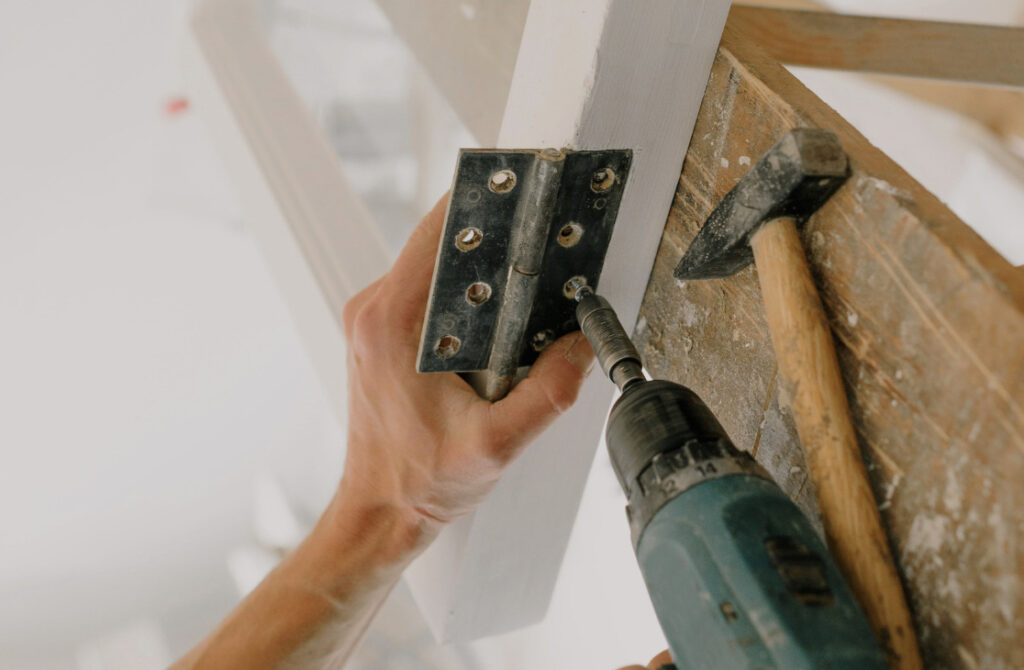
What is a Drill?
A drill is a handheld power tool that is used for drilling holes in a variety of materials. It works by spinning a drill bit at high speed and applying downward pressure to the material. Drills can also be used for driving screws and other fasteners with the right attachments.
When to Use a Drill:
- When you need to drill holes in wood, metal, or other materials
- When you need to drive small screws into materials like drywall or softwood
- When you need to use a hole saw or spade bit
- When you need to use a clutch or torque control to prevent overdriving screws
How to Use a Drill:
- Choose the right drill bit for the job (see the section below for more guidance)
- Insert the drill bit into the chuck of the impact drill and tighten it. This will look different depending on your drill model.
- Set the drill to the desired torque or power level (see the torque level section two sections down for guidance on this).
- Place the tip of the drill bit onto the material you want to drill.
- Pull the trigger of the impact drill to start drilling.
- Continue drilling until you’ve reached the desired depth. Take care to not over rotate and strip the screw or the hole you’re screwing into.
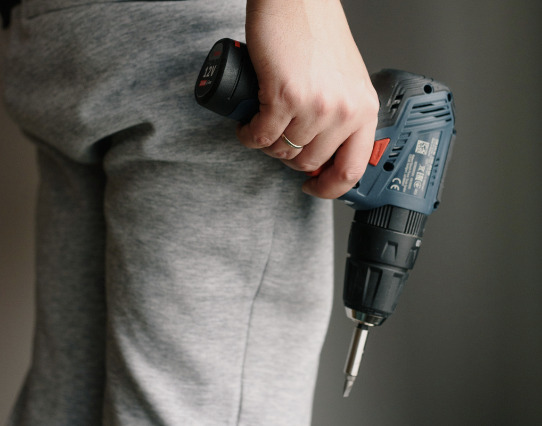
Drill Bit Types and Purposes
There are many types of drill bits available, each designed for a specific type of material and drilling application. Here are some of the most common types of drill bits:
- Twist Drill Bits: These are the most common type of drill bit and are used for drilling holes in a wide variety of materials, including wood, metal, and plastic.
- Masonry Drill Bits: These drill bits are designed for drilling into brick, concrete, and other masonry materials. If you have a tiled wall you are wanting to drill into to hang floating shelves or other purposes, this is the type of bit you want.
- Spade Drill Bits: These are flat, paddle-shaped drill bits that are used for drilling large holes in wood and other soft materials. I used a spade bit to make the monkey bars on this DIY playground project.
- Forstner Drill Bits: These drill bits are used for drilling flat-bottomed holes in wood and are commonly used for making furniture and cabinetry.
- Hole Saw Drill Bits: These are circular drill bits that are used for cutting large holes in wood, plastic, and other materials.
- Auger Drill Bits: These drill bits are designed for drilling deep holes in wood and are commonly used for drilling fence posts and other construction applications.
- Brad Point Drill Bits: These drill bits are designed for drilling clean, precise holes in wood and are commonly used in cabinetry and furniture making.
- Countersink Drill Bits: These drill bits are used for creating a tapered opening around a drilled hole, allowing screws or bolts to sit flush with the surface.
How to Set the Drill to the Desired Torque/Power Level
- Locate the torque adjustment ring: Most cordless drills have a torque adjustment ring located behind the chuck. It is usually marked with numbers or symbols that indicate the torque level.
- Determine the appropriate torque level: Consult the manual or the packaging for the screws or drill bits you are using to determine the appropriate torque level for your project. Generally, smaller screws require less torque than larger screws.
- If the screw begins to strip or the material begins to split, the torque is set too high and should be adjusted accordingly.
- It’s also worth noting that some materials may require a higher torque level than others. For example, harder materials like hardwood may require a higher torque level than softwoods or drywall. In these cases, you may need to adjust the torque level based on the specific material you are working with.
- Adjust the torque level: Turn the torque adjustment ring until the desired torque level is reached. Some drills may have a clutch setting instead of a torque adjustment ring, which serves the same purpose.
- Test the torque level: To ensure that the torque level is set correctly, test the drill on a piece of scrap material before using it on your project.
It’s important to set the drill to the appropriate torque level to avoid overdriving screws or damaging the material you are working with. By following these steps, you can ensure that your drill is set to the correct torque level for your specific project.
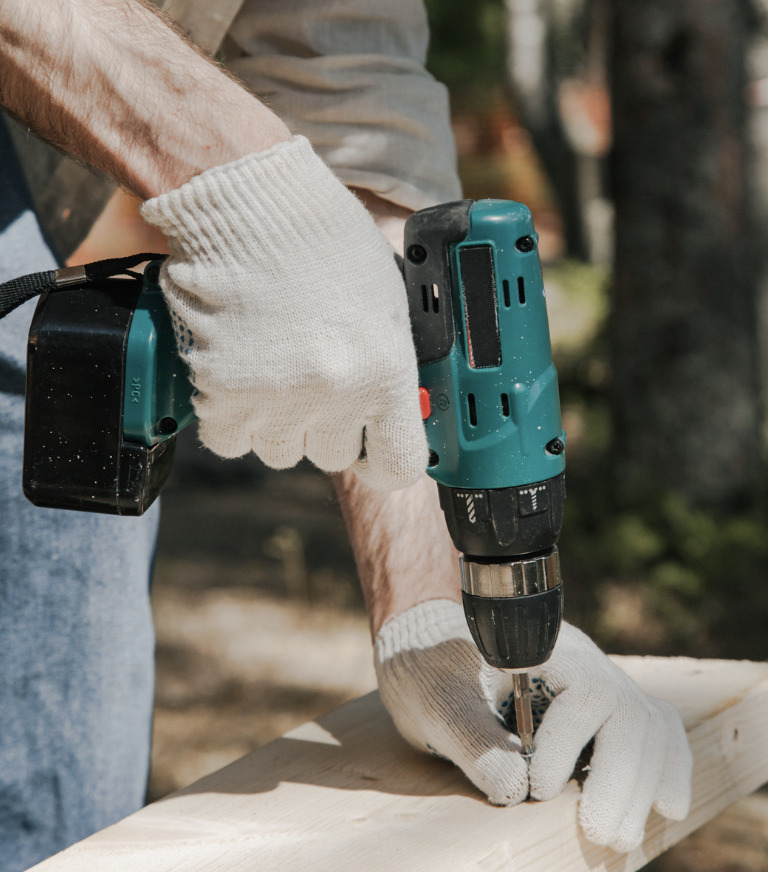
Can I Use a Drill as an Impact Driver or a Impact Driver as a Drill?
Can I use a drill as an impact driver? You cannot use a drill as an impact driver. While the two tools may look similar, they operate differently. A drill is designed to spin continuously and drill holes, while an impact driver delivers powerful rotational and downward force to drive screws and bolts.
Can I use an impact driver as a drill? While an impact driver can technically be used as a drill, it may not be the best option. Impact drivers are designed to deliver quick, powerful bursts of force, which can be helpful when driving screws but may not be ideal for drilling holes. Impact drivers typically do not have a clutch, which means they cannot be set to a specific torque setting, making it more difficult to control the depth of your drill holes.
If you need to drill holes, it’s generally better to use a drill designed for that purpose. However, if you only have an impact driver available, you can use it for light drilling tasks with the appropriate drill bit. Just be sure to proceed with caution.
So there you have it, impact drivers and drills are both valuable tools to have in your toolbox. Knowing when to use a drill vs impact driver and how to use them correctly can make all the difference in your DIY projects. Whether you’re driving screws or drilling holes, these tools can help you get the job done quickly and efficiently.
